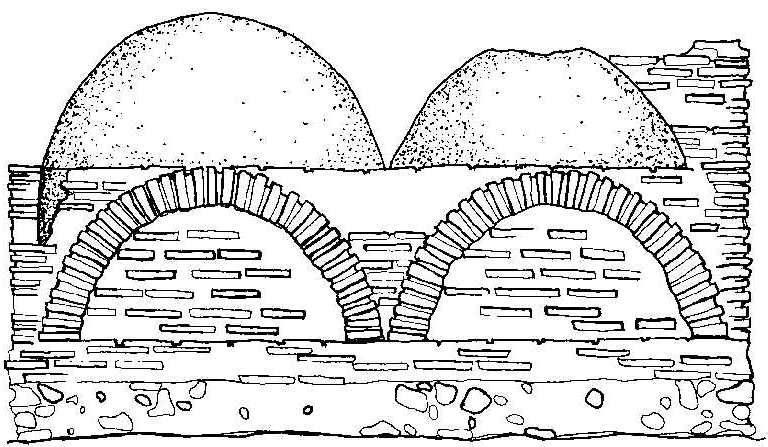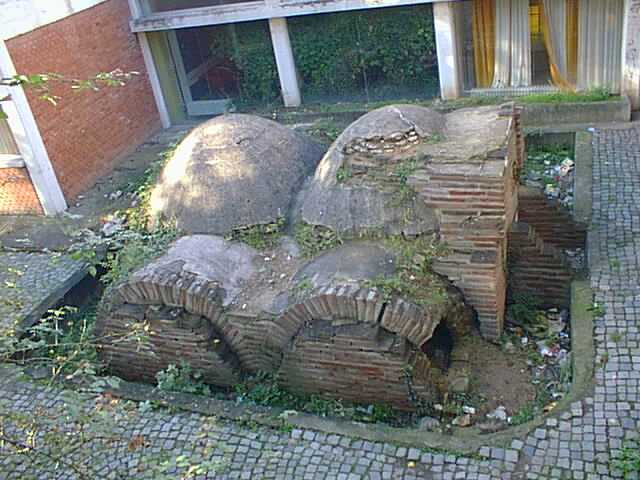

The Early-Christian mausoleum in Niška Banja was discovered in 1972, during the construction of the aid station of the "Radon" Institute complex. It is fitted into the architectonic structure of the new building, and thus made easily approachable to the visitors.
The Mausoleum has a 540 cm sided square base. The walls are 40-50 cm thick and 250 cm high. The interior is divided into four niches, two in the northern and two in the southern part, with elevated beds for laying the dead. There are two domes above the central part of the mausoleum, while the niches are covered with barrel vaults. The mausoleum is positioned in the east-west direction, with the entrance to the east. The access to the eastern side of the Mausoleum is 1 m long, and there are several steps to the entrance. The rectangular entrance opening used to be closed by a grooved stone slab. The Mausoleum is all built up of bricks. The exterior surfaces of the domes and barrel vaults, the access to the Mausoleum - dromos, as well as the interior walls and floor surfaces, are covered with a thin layer of mortar.

The early-Christian Mausoleum in Niška Banja, a look from the south
Modest material enclosures (a bone comb, a ceramic vessel), found among the remnants of the dead, and a simple garment of one of them, stay in harmony with the teachings of the Christian Church. The architectural forms of the Mausoleum, as well as their analogy with the necropolis in Jagodin-Mala, classify it among the sacral constructions dated to the period from the 4th to the 6th century.